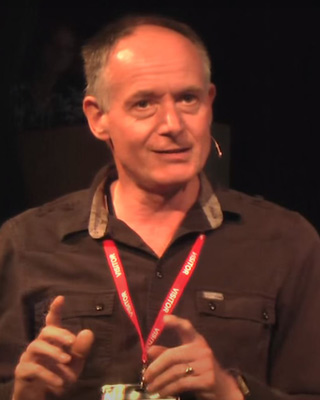Chris Bore

Don't Call Them Stupidents
Status: Available NowDSP remains a skill-shortage area: yet an employer obsession with experience means legions of freshly qualified Masters students - who have literally mastered their trade - are ignored by employers and recruiters.
In this talk I will moan about pointless and pathetic recruitment gatekeeping practices, big up the star quality of the many hundreds of Masters students, and engineers transitioning from othe fields into digital, with whom I have worked, trash the supposed superior knowledge of the gatekeepers, and politely suggest that employers take a long hard look at themselves and start to take some responsibility for growing the next generation of DSP engineers.
Geometric Representation of Signals
Status: Available NowRepresenting signals as geometric vectors is a simple and fundamental basis of signal processing. Outlined by Shannon in the same paper that introduced Sampling Theory, it offers powerful and intuitive ways to think about and analyze signal processing, but is often neglected in favour of the numerical technique that implement its methods. In this talk Chris Bore revisits this interesting topic and its relationship especially with Fourier Transforms, filters and communications.
An Acoustic Camera
Status: Available NowPhased array radar and sonar are common applications of signal processing. In this talk Chris Bore outlines the application of similar techniques to make a simple acoustic camera that renders a sound scene visually.
Live Q&A with Chris Bore - Geometric Representation of Signals
Status: Available NowLive Q&A with Chris Bore, following his talk titled "Geometric Representation of Signals"
Live Q&A with Chris Bore - An Acoustic Camera
Status: Available NowLive Q&A with Chris Bore for the talk titled "An Acoustic Camera"
Pragmatic Methods to Decide Filter Requirements (2020)
Status: Available NowWhile digital filter design – given a filter specification - is very well covered in numerous works, the essential practical question of how to arrive at the filter specification from the application is largely ignored: so the practicing engineer is faced with a well developed design methodology, but very little information to guide in specifying what to design. Similarly, there is little information available to guide decisions on the hardware platforms that are suitable to implement such a specification – including balancing issues such as numeric precision, speed, cost and power consumption – to assess whether the requirement may be met in a cost effective way: so the practicing engineer has limited guidance in deciding whether the application requirement may be met at all given practical constraints. The result is that engineers have limited ability to quickly assess whether a filtering requirement can be met: and digital filters very often under- or over-perform and are often implemented on needlessly costly or power-hungry hardware platforms. This talk addresses these twin gaps in the filter designer’s toolbox and outlines, with specific methods and examples, how the specification for a digital filter may be arrived at from consideration of the application aim and requirement. It also describes, again with specific methods and examples, how to arrive at a specification for the hardware platform necessary to implement such a filter. It does not address the issue of designing such a filter, which is very well covered in numerous texts elsewhere.
DSP in Phased Array 3D Imaging (2020)
Status: Available NowPhase is often the poor relation to magnitude in Fourier Transform analysis but can be the crucial measurement in some applications. Such is the case with phased array methods for imaging: in radar, security and medical imaging applications. The key to such applications is physics modelling and measurement of phase to reconstruct wave propagation and hence reconstruct 3D or 4D images of reflecting, refracting or scattering objects. This talk offers an overview of phased array imaging from the viewpoint of DSP, modelled as a 3D Fourier or Laplace Transform problem.
(Recording) Live Q&A Discussion - Pragmatic Methods to Decide Filter Requirements (2020)
Status: Available NowThis is the live Q&A session for the talk given by Chris Bore and titled 'Pragmatic Methods to Decide Filter Requirements'
Live Q&A Discussion - DSP in Phased Array 3D Imaging (2020)
Status: Available Now13:04:53 From Michael Kirkhart : nanovna 13:05:12 From Leonard Dieguez : those are fairly low cost but also do not cover the frequency range 13:05:17 From Leonard Dieguez : the nano VNA 13:05:27 From Michael Kirkhart : The version 2 goes to 3 GHz. 13:05:39 From Michael Kirkhart : Not quite to 8 GHz, but getting closer. 13:05:54 From Leonard Dieguez : cool that is a good improvement. I would love to have one that goes to 8GHz 13:06:40 From Leonard Dieguez : do you know of a good link to get the version 2 , 3GHz version? 13:06:50 From shadasharif : Thank you

